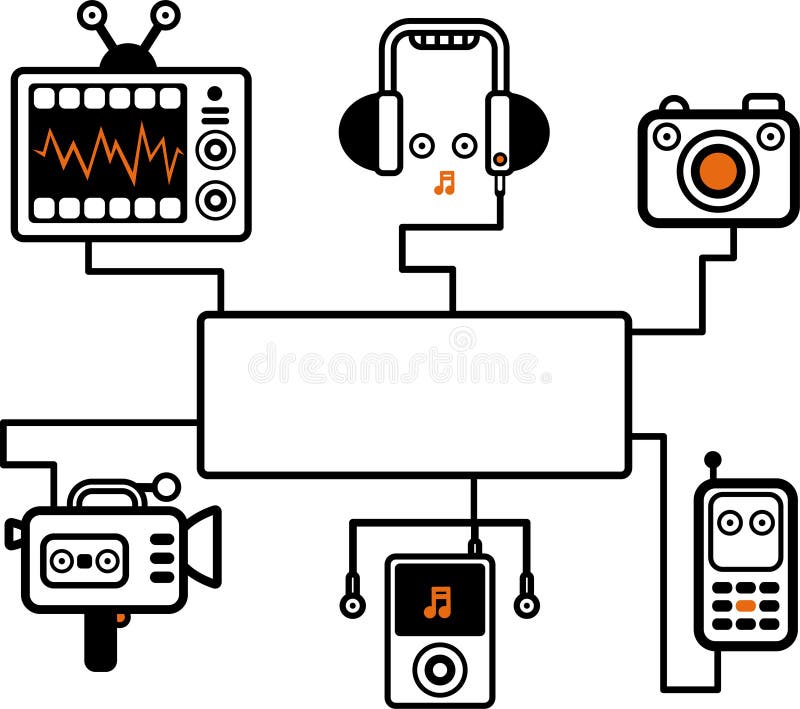Case studies showcasing audio visual charlotte nc in action
Wiki Article
Recognizing the Incorporation of Audio Visual Innovation in Today's Educational Environments
The combination of audio-visual technology in educational setups has changed the teaching and learning procedure. Educators currently have accessibility to devices that cater to different discovering styles, improving trainee interaction and collaboration. Nevertheless, the unification of these innovations provides both chances and obstacles. Recognizing how to effectively carry out these tools is vital. What strategies can educators utilize to maximize the advantages of audio-visual technology in their classrooms?The Advancement of Audio-Visual Innovation in Education And Learning
As instructional needs evolved over the decades, audio-visual technology undertook considerable transformations that improved the understanding setting. Originally, tools such as film projectors and slide shows were the main methods of integrating visual elements right into classrooms. These very early innovations offered educators with the capacity to present information dynamically, yet they were restricted in ease of access and interactivity.With the introduction of video cassette recorders in the 1970s, classrooms began to integrate recorded lessons, widening the scope of academic sources. The introduction of computers in the 1980s further reinvented this landscape, permitting the production of multimedia presentations and interactive understanding experiences.
The increase of the internet in the 1990s noted a crucial moment, allowing real-time access to a wide range of audio-visual products. Today, digital tools such as interactive white boards and on-line discovering platforms proceed to enhance the instructional experience, promoting involvement and cooperation among students.
Benefits of Audio-Visual Devices for Diverse Knowing Styles
Audio-visual devices play a vital role in dealing with varied learning designs by boosting aesthetic knowing and boosting acoustic engagement. By including images, video clips, and sound, these modern technologies create an even more inclusive academic atmosphere. This multifaceted approach enables instructors to address the diverse choices and needs of pupils properly.Enhancing Visual Learning
Involvement in the knowing procedure is markedly improved through using audio-visual tools, dealing with various discovering styles. These devices, such as videos, infographics, and interactive presentations, provide visual stimuli that help understanding and retention. Visual learners, specifically, take advantage of the unification of pictures and computer animations, which can streamline intricate principles and improve understanding. Furthermore, audio-visual sources can illustrate real-world applications, making finding out more pertinent and appealing. By incorporating color, movement, and audio, teachers can develop a dynamic knowing setting that catches trainees' attention and fosters deeper cognitive links. Inevitably, the strategic use audio-visual technology not just sustains visual understanding however likewise enhances the total educational experience for diverse students.Improving Auditory Involvement
A significant advantage of incorporating audio-visual devices in education is their ability to enhance acoustic engagement amongst pupils. These tools, which incorporate multimedia presentations, podcasts, and interactive sound elements, deal with various discovering styles, particularly benefiting acoustic learners (audio visual charlotte nc). By integrating audio and narrative, instructors can develop immersive experiences that capture pupils' attention and reinforce comprehension. This engagement is vital, as it cultivates a much deeper understanding of the material and advertises retention. Furthermore, audio-visual tools can facilitate collective learning environments, urging pupils to join conversations and share their understandings. Inevitably, the incorporation of audio-visual technology not just supports auditory interaction however likewise enhances the total instructional experience, making discovering more vibrant and effective for all traineesEnhancing Involvement With Interactive Discovering

Gamification aspects, such as tests and simulations, can boost inspiration and retention, making learning a lot more satisfying and efficient. These approaches not just stimulate cognitive engagement but additionally deal with diverse learning designs, guaranteeing that all students can participate meaningfully. As an outcome, interactive discovering settings cultivate a feeling of area and belonging, ultimately leading to enhanced scholastic outcomes. Through the integration of audio visual innovation, teachers can change standard classrooms into dynamic rooms where students flourish and proactively shape their academic trips.
Connecting Theory and Exercise With Multimedia Resources
Multimedia resources act as a vital link between academic concepts and useful application in instructional settings. By boosting involvement, promoting collaborative knowing experiences, and sustaining diverse learning styles, these devices produce an extra inclusive and dynamic learning atmosphere - audio visual charlotte nc. This method not just promotes deeper understanding but likewise prepares trainees for real-world challenges
Enhancing Interaction Through Multimedia
Involvement in educational setups substantially increases when instructors incorporate multimedia resources into their teaching methods. Using video clips, podcasts, and interactive discussions improves the learning experience, permitting trainees to link with the material on multiple levels. Multimedia resources cater to various finding out styles, supplying aesthetic, acoustic, and kinesthetic stimuli that can hold pupils' focus a lot more effectively than conventional lecture methods. Additionally, these resources can simplify intricate ideas, making them extra available and remarkable. By integrating multimedia, educators can develop a vibrant class atmosphere that fosters interest and motivates students. Eventually, the calculated usage of audio-visual modern technology serves to link the void between theoretical expertise and sensible application, improving the instructional experience for both trainers and students.Helping With Collaborative Knowing Experiences
Various researches suggest that collaborative discovering experiences considerably improve trainee outcomes when incorporated with multimedia resources. Multimedia tools promote interaction among pupils, allowing them to involve in analytic and critical thinking jointly. By using video conferencing, collaborative systems, and interactive presentations, instructors develop environments for synergy and shared knowing. These technologies make it possible for trainees to communicate their ideas efficiently and receive instant responses, fostering a much deeper understanding of the subject matter. In addition, multimedia sources can present complex principles in even more digestible styles, advertising conversation and partnership. Because of this, the mix of collaborative understanding and audio-visual innovation not just enhances the academic experience but also prepares pupils for real-world synergy dynamics, emphasizing the relevance of collaboration and cumulative expertise building.Supporting Diverse Discovering Styles
While typical teaching approaches typically deal with a restricted array of finding out choices, the assimilation of audio-visual modern technology offers a more comprehensive technique to education and learning. By using multimedia resources such as videos, interactive simulations, and electronic discussions, instructors can resolve different finding out styles, including aesthetic, auditory, and kinesthetic. This adaptability enables set apart guideline, enabling pupils to engage with material in means that resonate with their specific choices. In addition, audio-visual tools can assist in deeper understanding by supplying multiple representations of intricate concepts. Because of this, pupils that may fight with standard methods can find alternative pathways to success, cultivating a more equitable knowing environment that sustains scholastic accomplishment for all learners.Obstacles in Carrying Out Audio-Visual Technology
Audio-visual modern technology holds wonderful guarantee for boosting instructional experiences, its implementation frequently experiences considerable obstacles. One primary worry is the economic worry related to getting and maintaining such devices, which can strain spending plans, particularly in underfunded institutions. In addition, poor training for teachers can prevent effective assimilation, leaving them ill-prepared to make use of the innovation totally. Technical issues, such as software breakdowns and compatibility issues, might additionally disrupt lessons and annoy both teachers and pupils. Differing levels of trainee access to technology outside the class can develop differences in finding out chances. The possibility for over-reliance on technology might take away from important teaching methods, eventually limiting the instructional experience. Addressing these difficulties requires a detailed strategy, including adequate financing, professional advancement, and fair access to sources, to guarantee that audio-visual modern technology can be leveraged successfully in today's educational settings.Best Practices for Integrating Innovation in the Class

Furthermore, fostering an interactive setting with collective tools urges trainee engagement and involvement. Making use of diverse audio-visual resources accommodates different discovering designs, accommodating visual, acoustic, and kinesthetic students. Consistently evaluating the influence of technology on trainee understanding assists teachers refine their approaches and adapt to transforming requirements. Including trainees in the selection of technology advertises ownership and inspiration. By sticking to these finest techniques, instructors can produce a vibrant classroom atmosphere that efficiently incorporates technology and boosts the academic experience for all students.
The Future of Audio-Visual Innovation in Education And Learning
As classrooms significantly accept innovation, the landscape of audio-visual tools in education remains to advance (audio visual charlotte nc). Future developments are anticipated to concentrate on better interactivity and customization, enabling educators to customize discovering experiences to private student demands. Innovations such as enhanced fact (AR) and virtual fact (VIRTUAL REALITY) will likely give immersive understanding settings, boosting trainee interaction and understanding
Additionally, expert system (AI) is poised to play a substantial role in audio-visual technology by supplying real-time feedback and flexible discovering paths. This combination might assist instructors determine and resolve pupil difficulties much more effectively. Cloud-based platforms will certainly facilitate easier accessibility to resources and cooperation amongst students and educators, no matter place.
In addition to these technical advances, expert advancement for educators will certainly be vital, ensuring they are equipped to utilize these tools effectively. In general, the future of audio-visual technology in education assures to create more vibrant, inclusive, and impactful discovering experiences.
Regularly Asked Questions
Exactly How Can Teachers Choose the Right Audio-Visual Equipment for Their Classrooms?
Picking ideal audio-visual tools needs teachers to assess their educational goals, take into consideration pupil requirements, examine available innovation, and look for recommendations from peers or specialists, guaranteeing more info tools successfully boost discovering and engagement within their specific class atmosphere.What Budget Considerations Are There for Executing Audio-Visual Modern Technology?
Budget factors to consider for executing audio-visual innovation include first acquisition expenses, maintenance costs, training for staff, and possible software program licensing fees. In addition, lasting financial investment in updates and replacements need to additionally be factored into financial planning.Are There Particular Training Resources for Teachers on Audio-Visual Tools?
Several organizations provide training sources for teachers on audio-visual tools, including on-line courses, workshops, and training guides. These sources aim to improve educators' skills and confidence in efficiently incorporating technology into their teaching techniques.Exactly how Do We Measure the Performance of Audio-Visual Technology in Understanding?
Gauging the effectiveness of audio-visual modern technology in learning entails assessing trainee engagement, understanding, retention rates, and total academic efficiency. Surveys, analyses, and observational research studies can provide beneficial understandings into its effect on educational outcomes.What Prevail Misunderstandings Regarding Audio-Visual Innovation in Education And Learning?
Usual misunderstandings regarding audio-visual modern technology in education consist of the belief that it assures involvement and discovering outcomes, as well as the presumption that all trainees benefit equally, forgeting specific understanding choices and needs.Report this wiki page